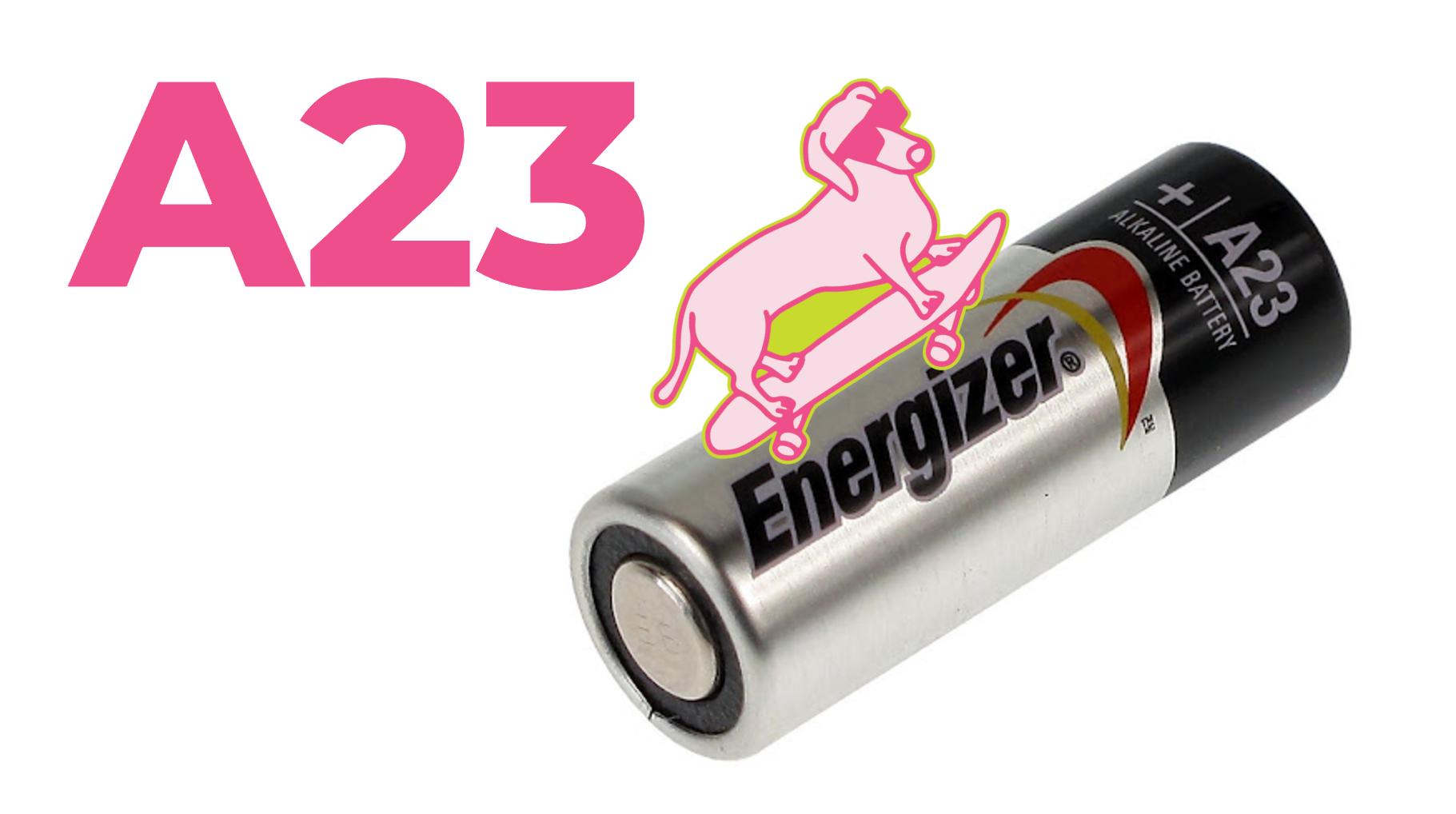
What is an A23 Battery and How is it Used?
The A23 battery, also known as 12V alkaline battery, is a small cylindrical battery primarily used in low-drain electronic devices. It consists of eight LR932 cells, providing a nominal voltage of 12 volts. Measuring approximately 28.2 mm in length and 10 mm in diameter, it typically weighs around 8 grams and has a capacity of about 55 mAh. This design makes it ideal for compact devices requiring reliable power.
What Devices Commonly Use the A23 Battery?
The A23 battery is commonly used in various devices, including keyless vehicle entry systems, garage door openers, security alarms, Bluetooth headsets, and remote controls. Its compact size and high voltage make it ideal for small electronic devices that require reliable power.
The A23 battery powers various small electronic devices, including:
- Keyless Entry Systems: Used in cars for remote locking/unlocking.
- Home Security Systems: Powers alarms and sensors.
- Garage Door Openers: Operates remote controls for automatic doors.
- Bluetooth Devices: Commonly found in headsets and speakers.
| Device Type | Example Uses |
|---|---|
| Keyless Entry | Car remotes |
| Security Systems | Alarm systems, motion detectors |
| Garage Door Openers | Remote controls for garages |
| Bluetooth Devices | Wireless headsets, speakers |
How Does the A23 Battery Compare to Other Types of Batteries?
The A23 battery operates at 12 volts, which is higher than standard AA or AAA batteries (1.5 volts). It is similar in size to the A27 battery but offers higher voltage output. Unlike rechargeable batteries, the A23 is a non-rechargeable alkaline battery designed for specific applications requiring compact power. When comparing the A23 battery to other common batteries, several key differences emerge:
- Voltage: The A23 provides a higher voltage (12V) compared to standard alkaline batteries like AA (1.5V) or AAA (1.5V).
- Size: The A23 is smaller than both AA and AAA batteries, making it suitable for compact devices.
- Capacity: While its capacity (55 mAh) is lower than larger batteries, it is sufficient for low-drain applications.
| Feature | A23 Battery | AA Battery | AAA Battery |
|---|---|---|---|
| Voltage | 12V | 1.5V | 1.5V |
| Capacity | 55 mAh | 2000-3000 mAh | 1000-1200 mAh |
| Dimensions | 28.2mm x 10mm | 50.5mm x 14.5mm | 44.5mm x 10.5mm |
What Are the Environmental Benefits of Using an A23 Battery?
A23 batteries are often designed to be mercury-free, reducing their environmental impact compared to older battery technologies. Additionally, they have a longer shelf life and lower self-discharge rates, meaning fewer batteries are disposed of over time, contributing to less waste. The A23 battery offers several environmental benefits:
- Mercury-Free Design: Many modern A23 batteries are designed without mercury, reducing environmental impact.
- Recyclability: These batteries can be recycled, which helps minimize waste and recover valuable materials.
- Lower Carbon Footprint: By using efficient power sources in devices, they contribute to energy conservation.
Where Can You Purchase A23 Batteries and What Are Their Prices?
A23 batteries are widely available at electronics stores, online retailers like Amazon, and local supermarkets. Prices typically range from $2 to $5 per battery, depending on the brand and quantity purchased. Bulk purchases may offer additional savings.
| Retailer | Price Range |
|---|---|
| Local Electronics Store | $1.00 – $2.00 |
| Online Retailers | $0.70 – $1.50 |
| Bulk Purchase Discounts | $0.60 – $0.90 per unit |
How Should You Properly Store and Dispose of an A23 Battery?
Store A23 batteries in a cool, dry place away from direct sunlight and extreme temperatures to maintain their performance. When disposing of them, follow local regulations for battery recycling or disposal to minimize environmental impact. Many retailers offer recycling programs for used batteries. Proper storage and disposal are essential for safety and environmental reasons:
- Storage: Keep batteries in a cool, dry place away from direct sunlight or heat sources to prevent leakage or damage.
- Disposal: Do not throw batteries in regular trash; instead, use designated recycling programs or take them to hazardous waste facilities.
Industrial News
Recent trends indicate a growing demand for compact batteries like the A23 due to their use in smart home technology and security applications. Manufacturers are focusing on improving energy density while maintaining safety standards, which enhances performance across various devices. Additionally, recycling initiatives are becoming more prevalent as companies aim to reduce environmental impact.
LiFePO4 Battery Expert Views
While the A23 battery serves specific low-drain applications effectively, advancements in lithium technology are paving the way for more efficient energy solutions,” states Dr. Sarah Johnson, an automotive energy expert. “As we move towards smarter devices, understanding these options will be crucial for consumers.” This insight emphasizes the importance of evolving battery technologies that meet modern energy demands.
